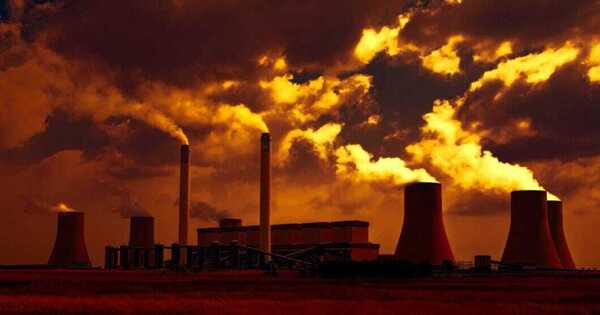The effects of human activity on Earth’s surface, such as greenhouse gas emissions and deforestation, have been extensively investigated. Now, hydrological experts at the University of Arizona have explored how humans affect Earth’s deep underground, which is hundreds of meters to several kilometers beneath the planet’s surface.
“We looked at how the rates of fluid production with oil and gas compare to natural background circulation of water and showed how humans have made a big impact on the circulation of fluids in the subsurface,” said Jennifer McIntosh, a professor in the UArizona Department of Hydrology and Atmospheric Sciences and senior author of a paper detailing the findings in the journal Earth’s Future.
“The deep subsurface is out of sight and out of mind for most people, and we thought it was important to provide some context to these proposed activities, especially when it comes to our environmental impacts,” said lead study author Grant Ferguson, an adjunct professor in the UArizona Department of Hydrology and Atmospheric Sciences and a professor in the University of Saskatchewan’s School of Environment and Sustainability.
The deep subsurface is out of sight and out of mind for most people, and we thought it was important to provide some context to these proposed activities, especially when it comes to our environmental impacts.
Grant Ferguson
According to the study, human-induced fluid fluxes are expected to grow in the future as climate change mitigation techniques are developed. Such strategies include geologic carbon sequestration, which involves capturing and storing atmospheric carbon dioxide in underground porous rocks; geothermal energy production, which involves circulating water through hot rocks to generate electricity; and lithium extraction from underground mineral-rich brine to power electric vehicles. The study was carried out in partnership with academics from the University of Saskatchewan in Canada, Harvard University, Northwestern University, Korea Institute of Geosciences and Mineral Resources, and Linnaeus University in Sweden.
“Responsible management of the subsurface is central to any hope for a green transition, sustainable future and keeping warming below a few degrees,” said Peter Reiners, a professor in the UArizona Department of Geosciences and a co-author of the study.
According to McIntosh, there is always some water, usually saline, emitted from the deep subsurface during oil and natural gas extraction. Underground water is often millions of years old and gets its saltiness from either evaporating ancient seawater or reacting with rocks and minerals. More water from near-surface sources is added to the salt water to compensate for the amount of oil extracted while also maintaining reservoir pressures. The combined saline water is then reinjected into the subsoil. This creates a loop of creating fluid and reinjecting it into the deep subsurface.
The same process happens in lithium extraction, geothermal energy production and geologic carbon sequestration, the operations of which involve leftover saline water from the underground that is reinjected.

“We show that the fluid injection rates or recharge rates from those oil and gas activities is greater than what naturally occurs,” McIntosh said.
Using existing data from a variety of sources, including measurements of fluid movements related to oil and gas extraction and water injections for geothermal energy, the team discovered that current fluid movement rates caused by human activity are higher than how fluids moved prior to human intervention.
As human activities such as carbon capture and sequestration and lithium extraction increase, experts forecast how these activities will be reflected in the geological record, which is Earth’s history as recorded in the rocks that make up its crust.
Human activities have the potential to alter not just the deep subsurface fluids but also the microbes that live down there, McIntosh said. As fluids move around, microbial environments may be altered by changes in water chemistry or by bringing new microbial communities from Earth’s surface to the underground.
For example, hydraulic fracturing, a procedure used to crack subsurface rocks with pressurized liquids for oil and gas extraction, may cause a sudden bloom of microbial activity in a deep rock formation that previously had no identifiable microbial population.
There are still many unknowns regarding the Earth’s deep subsurface and how human actions affect it, and McIntosh believes it is critical to continue researching such concerns.
“We need to use the deep subsurface as part of the solution for the climate crisis,” Mr. McIntosh added. “Yet, we know more about the surface of Mars than we do about water, rocks and life deep beneath our feet.”
















